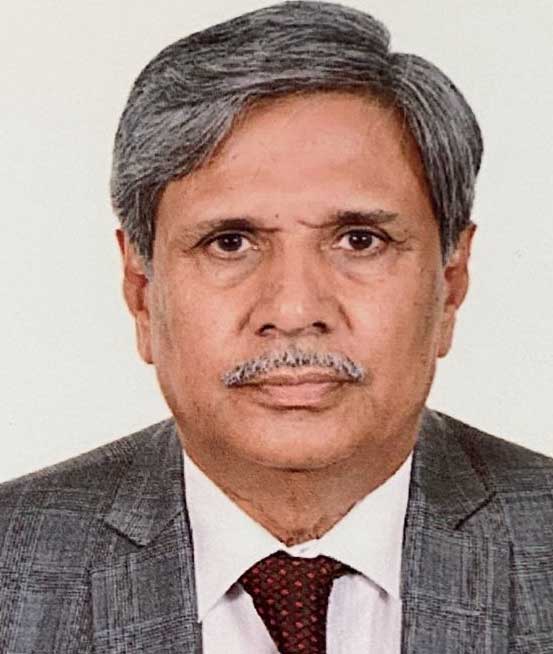During a seminar on the Wind-Solar Hybrid Project on July 29, 2024, it was revealed that one of the largest floating Solar Energy Power Plant of the World of 550 MW was in pipeline on Keenjhar Lake. This was to be constructed by Go, Energy Pvt., Ltd. and Transmission facilities provided by the Sindh Transmission and Distribution Company, through a 66km long, 220 Kv Transmission Line from the Lake to Dhabeji Grid. Station; as a connecting point. The off taker of electricity would be the Karachi Electric Company.
Revealing the above facts, I was astonished, how a floating solar project could be proposed and installed on Keenjhar lake despite of its ecological significance as a designated Wildlife Sanctuary and a World’s Wetland Asset. My attempts to access the feasibility report were unsuccessful, as the feasibility was available only on payment of huge amount in rupees. Thus leaving reliance on a more than two-months-old news report from “The Daily Dawn”, dated July 14, 2024. The News Report was almost the same story, as briefed during the Seminar. The additional information was that various agreements were signed for implementation of the Project between Go Energy Pvt.ltd, the Energy and Irrigation Departments, Government of Sindh and the Karachi Electric Supply Company, whereas the completion of the Project had been shown in the Year, 2026.
On the grounds discussed below; this Project on Keenjhar lake needs revisit and relocation of the Site:
Ecological Significance of Keenjhar Lake as a first priority:
Keenjhar Lake, also known as Kalri Lake, is a Ramsar Site, recognized under the Ramsar Convention, 1971. This designation highlights its importance as a wetland of international significance. The Government of Sindh recognising the importance, notified it as a Wildlife Sanctuary. The lake served as a crucial habitat for a variety of migratory and indigenous bird species, different other wetland creatures and fisheries.
During the winter season, it becomes a resting place for migratory birds from Siberia, making it a vital part of the global migratory birds network’, contributing a lot to the World’s biodiversity.
The lake’s ecosystem is delicate and highly sensitive to changes. The introduction of a large-scale floating solar panel platform on 1/4th of the lake would disrupt this balance. These panels would block sunlight from reaching the water; essential for the growth of aquatic flora and fauna, forming base of the feed chain in the lake for aquatic life. Without sunlight, these plants wouldn’t photosynthesize, besides the feed for lake culture; this would lead to decline in oxygen levels in the water, having cascading effect on the entire ecosystem. This would affect fish and other aquatic organisms that depend on these plants for their feed, oxygen and habitat.
Socioeconomic Importance:
Keenjhar Lake is not only an ecological treasure but also a socioeconomic asset. It supplied drinking water to Karachi, a Metropolitan and Pakistan’s largest City. The lake supported livelihoods of over 50,000 people living in the surroundings. These communities depended on the lake’s resources for fisheries and aquatic vegetation. The floating solar project would lead to a decline in both the earning sectors; forcing residents to migrate to already overcrowded large cities
It would be worth to emphasise the potential importance of the lake as a tourist destination. Its location; being near to Karachi had made it ideal for exploring its development as a World Class tourist spot. Putting this petty floating solar energy plant would devastate its attraction for the tourists as AC wildlife treasure.
Cost-Benefit Analysis:
From a cost perspective, floating solar projects would significantly be more expensive to instal, run and maintain as compared to land-based project. The high humidity beneath the solar panels would reduce their lifespan, making them less durable than their land-based counterparts. The floating solar power plants could be given weightage only on scarcity of available land or prevent conversion of agriculture land to power generation facility. In this case, barren land was available right from Keenjhar Lake up to the connecting point at Dhabeji Grid Station, which should have been utilised for cost effectiveness of the Project and thereby reduced generation cost.
However, a second option of shifting this Floating Project to the outgoing canal from the lake to Dhabeji Pumping Station could be explored, having additional points of merit; apart from eliminated echo-logical negative impact on the lake as:
a) The running water evaporates more in comparison to still/ stagnant water due to kinetic energy of water molecules. Thus there would be more saving in water by this shift.
b) The second and more important advantage would be reduction in man-made pollution of drinking water supplied to Karachi. I, myself while travelling on the National Highway had witnessed people washing their clothes on the canal shore with return of the polluted water by dirt and detergent back in the Canal. Being close to the Highway, at many places drivers manually washed/ serviced their vehicles ranging from bikes to heavy trucks by canal water and the affluent back in the canal. The Floating Solar System on the Canal would prevent easy approach of drivers and other people to the canal water, eliminating drinking water from manmade pollution.
Government’s Efforts and Concerns:
The Sindh Government’s efforts to promote green energy through alternate energy sources were commendable. These initiatives align with global trend towards cheap, sustainable and environment friendly renewable energy sources. However, there seemed some lack of research and incompetency on the part of the experts, putting forward ideas for this proposal; lacking thorough knowledge and stakeholder consultation, as a mandatory requirement for any Project. They didn’t realise seriousness of long-term negative impact on the lake’s biodiversity and ecological imbalance, socio-economical constraints and even cost benefit ratio; as essential ingredients for any Project. It seemed initiation of such an infirm and freakish plan was an outcome of ‘Google Search’, where “Resource Persons’ in the Government’s Energy Sector found existence of solar energy floating plants on lakes. They presumed, since Keenjhar lake, as one of the largest lakes in the World existed in this Country than why we should not be ahead of other countries by initiating such a system on this Lake; without studying in depth its viability and status of the lake.
Proposal for Electrification of Remote Areas through Mini-grid Stations
The proposal to electrify remote areas through mini grid stations lacks clarity. Direct installation of mini solar plants with backup systems would be more efficient and economical. Mini solar plants could be installed directly in remote areas, eliminating costs on long-distance transmission lines.
The idea of mini remote grid stations linked with this Project could not be understood.
Questionable Approval by Foreign Experts:
The project’s approval by foreign experts from Singapore raised questions about their deliberate oversight and doubt about their consult-ion with local stakeholders and review of the lake’s ecological status from official and other record. The approval process should have involved a thorough review of the project’s potential environmental and socioeconomic impacts; as well as consultations with local communities and experts.
If thorough consultations with all stakeholders had been organised, clear picture would have emerged restraining them from such a despicable approval of the project, raising questions about legitimacy and credibility of the Foriegn Experts.
It was essential to involve local experts and stakeholders in the review process to ensure the project’s designing and implementation in a way forward; minimised negative impacts and maximising the benefits.
Questions also emanate, why the floating solar energy project was approved and cleared on Keenjhar Lake, whereas more economical and beneficial facilities were available.
Recommendations:
1. Relocate the Solar Plant: There is no way, except to shift the project as a first option to a land site, since most of the land between the lake and the Dhabeji Grid Station is barren and could be purchased at a very nominal price. If decided to shift the plant from Lake to land, then, it could be installed anywhere on its merit; might be it stands feasible somewhere in the vicinity of Motorway in district Jamshoro.
However, the second option of shifting the floating solar energy project from Keenjhar lake to it’s outgoing Canal could also merit for consideration; since this beside eliminating disturbance to the Lake’s echo-system would save more water as loss from evaporation and more essential to protect the drinking water supplied to Karachi from manmade pollution, as discussed in paragraph 2-b) under the heading ‘Cost-Benefit Analysis’.
2-Promote Tourism: The Keenjhar Lake has a very high potential of development as tourism spot. International level tourism facilities could be developed around the lake under pubic-private partnership. Lake’s proximity to Karachi makes it an ideal location for International Tourism; as sustainable source of income to local communities and handsome amount added in the National exchequer.
Tourism development could include eco-friendly accommodations, areas around the lake to view birds species and other native creatures of wetland in their natural habitat; along with other recreational activities, and educational programs about the lake’s ecological significance.
Such huge infrastructure would need uninterrupted power supply. For the purpose a 3-4 MW Wind-Solar Hybrid project along with a backup arrangement could be explored.
3-Cost Efficiency: Prioritise it as land-based solar project to reduce installation and maintenance costs and its extended life span.
However, as already discussed, second option of shifting the floating solar energy project from Keenjhar lake to its outgoing Canal merits consideration.
4-Direct Solar Installation: It is not understood why concept of mini grid stations had been linked with this Project. Installing mini solar plants directly in remote areas instead of relying on mini grid stations would be more sustainable and economical; eliminating cost on transmission lines. This approach would provide a furthermore reliable and sustainable source of electricity for remote communities.
5-Review by Experts: Feasibility of the Project has to be re-evaluated with thorough consultation with the local stakeholders; including ecological and energy experts, particularly experts having knowledge in the economy of renewable energy projects, to ensure legitimacy and sustainability of the plan.
It is questionable why the floating solar energy project was approved and cleared on Keenjhar Lake, where more economical and beneficial facilities were available. This is beyond imagination, how an international repute company from Singapore cleared and gave go ahead for such a freakish and impracticable plan.
Conclusion
In conclusion, no doubt the solar energy power project; as clean and green energy is need of the day but installing the same as floating solar energy power project; particularly on Keenjhar Lake is beyond imagination. There is not even a single aspect to merit its installation on the lake; declared as wildlife sanctuary and the World ‘s wetland asset. Although, aimed to promote green and clean energy, it posed significant ecological and socioeconomic risks. On other hand lake’s tourism potential on international standard could be explored, raising earnings of local people and simultaneously, protecting Keenjhar Lake’s ecological system.
Such development projects should carefully be evaluated to ensure protection of delicate ecosystem of the lake and the livelihood of the communities.
Finally, to say that all the above discussions, findings, and recommendations are based on the information, solely provided by the “Daily Dawn”.
I’m curious to see what insights will emerge once we delve into the project’s details. Reviewing the full feasibility study and its relevant documents, which could reveal a lot about the project’s viability, potential risks, technical and environmental requirements, regulatory compliances, stakeholder interests and many more.





